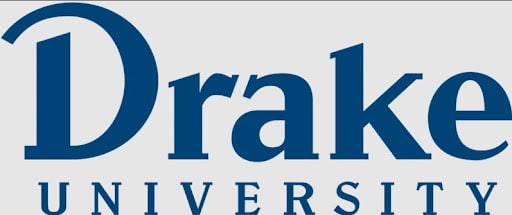Business leaders share child care challenges, call for higher pay in meeting with Ernst, Grassley

MICHAEL CRUMB Oct 21, 2022 | 3:26 pm
4 min read time
992 wordsAll Latest News, Government Policy and LawSen. Joni Ernst, right, speaks with Central Iowa business leaders Thursday during a roundtable discussion about how child care issues affect the workforce while Sen. Chuck Grassley and Emily Schmitt from Sukup Manufacturing Co. listen. Below: Kate Guess, vice president of human resources at Vermeer Corp., speaks during the roundtable discussion. Photos by Michael Crumb
More needs to be done to ensure that child care centers statewide are sustainable by working to increase pay for their employees, business leaders told U.S. Sens. Joni Ernst and Chuck Grassley during a roundtable discussion on how child care issues affect the workforce.
Representatives from Vermeer Corp., Sukup Manufacturing Corp., the Iowa Business Council, the Iowa Association of Business and Industry, the Greater Des Moines Partnership and the National Federation of Independent Businesses participated in the forum. The conversation was moderated by Emily Schmitt, general counsel for Sukup, who also served as chair of Gov. Kim Reynolds’ Child Care Task Force, which developed recommendations for addressing the state’s child care crisis.
During the conversation with the business leaders, Ernst and Grassley unveiled details of bills they have signed on to in Washington that they say will provide resources to improve child care access statewide.
One bill is the Small Business Child Care Investment Act, which would allow nonprofits to participate in the same loan programs available to for-profit businesses. Another bill is the Child Care Development Block Grant Reauthorization Act, which would make child care more affordable for parents, improve reimbursement rates for families with parents making less than 150% of the state’s median income, and lessen restrictions on home-based providers.
But businesses shouldn’t rely solely on the government to find solutions to the child care issue, Ernst said.
“It is so important that our employers understand that if they want workers who will show up every single day and meet their obligations and be productive, that they also need to make sure they are investing in that child care provider space,” she said. “Only when we have safe, secure child care options can those employees show up to work every single day. So it’s important that they recognize they have a role and an obligation in this area, as well.”
Following their presentations, Ernst and Grassley heard from several of the business leaders in attendance, who shared stories about losing prospective employees because slots in local child care centers weren’t available, about losing workers who opted to stay home because child care wasn’t available where they lived, and about challenges with employees navigating the high costs of child care, which often is higher than monthly housing costs.
Kate Guess, vice president of human resources at Vermeer Corp., said she initially turned down a job offer from Vermeer because there were no child care slots open in Pella at the time.
Vermeer implemented on-site day care in 2014 with its Yellow Iron Academy. Pella Corp. has invested in child care with its New Horizon center, and construction recently began on a school-based center in Pella that will increase capacity, Guess said.
The Vermeer and Pella Corp. centers are also open to community members, not just employees of the companies.
Even if openings for children are available, they aren’t able to be filled because of the child care worker shortage, Guess said.
“First, you have to make sure you have the infrastructure,” she said. “Then you really have to look at, how are you going to create a sustainable model to optimize the capacity that you have?”
Guess said there are a couple of challenges in doing that.
“I think we just need to navigate as a community to be able to attract into the child care industry,” she said. “Wages have to change to make this a sustainable space for young people to want to go into.”
And when wages are increased, that can’t be passed on to parents because it makes child care even less accessible for families, she said.
Those increases must be picked up by someone else, and in the case of Vermeer’s Yellow Iron Academy, the company absorbs those costs, Guess said.
Although child care providers support some changes made by the Legislature last year, including increasing ratios allowing more children to be supervised by an individual employee, wages haven’t kept up to meet that increased challenge, she said.
“We like that the ratios are evolving, but just making sure that we can also increase those wages to demonstrate that value that they’re delivering, as well,” Guess said.
Renee Hansen, external relations manager at Sukup Manufacturing, said the Sheffield-based company has lost employees because of child care challenges. The company also has employees who have to travel up to 40 miles to get child care in a different city, or they rely on a grandparent for child care so they can work, she said.
She agreed that a primary challenge in child care is filling open staff positions.
“While we want to build that infrastructure in Sheffield, and that’s great, and we have the capacity for up to 150 slots, some of the day care providers are really concerned about how they are going to hire enough staff to meet that capacity,” Hansen said. “How do we pay them enough so they can retain and recruit more workers at these day care facilities?”
Ernst said another issue that has surfaced in talks with employers statewide is the lack of availability of child care for people working second and third shifts.
Solving the child care issues will need engagement from all levels of government and the community, she said.
“I don’t know that that will be a federal-level issue, but I think in partnership with creative ideas, whether it’s through tax incentives or other potential opportunities, that we can find a way to ease the burden for some of those providers and employers who desire to engage in this space, and they should all engage in this space,” Ernst said.










